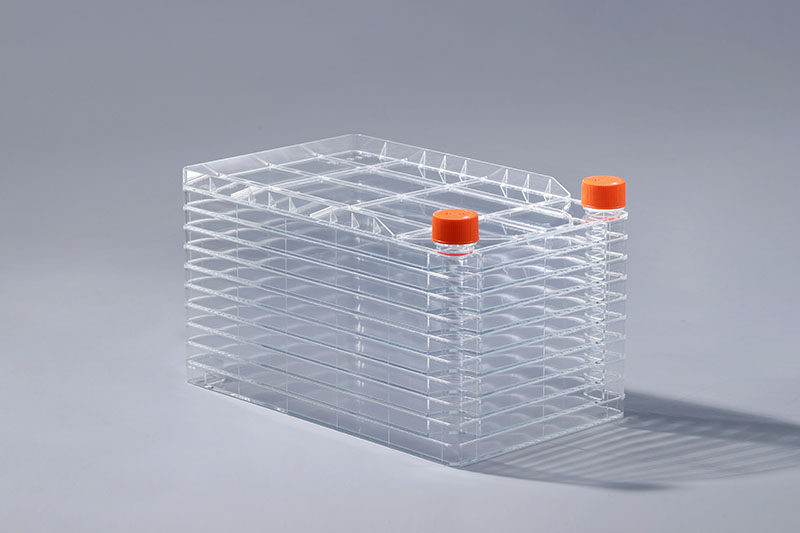は、ポリスチレン(PS)原料で作られた細胞培養消耗品です。多層構造設計を採用しています。一般的な仕様には、1層、2層、5層、10層、および40層が含まれます。必要に応じてレイヤーの数をカスタマイズします。では、この特殊な消耗品の構造にはどのような製造プロセスが使用されますか?セルファクトリで使用される射出成形プロセスには、主に次のステップが含まれます:セルファクトリ
1。プレモールドプロセス:
プレモールドプロセスでは、プラスチック材料をバレル内で加熱、輸送、圧縮、せん断、混合、ホモジナイズして、材料をガラス状態から粘性流体状態に変換します。射出成形の要件を満たします。
2。射出成形プロセス:
射出充填段階では、スクリューは、射出シリンダーの推力の下で、ノズル、モールドランナー、およびゲートを介して、貯蔵チャンバー内の溶融物をキャビティに射出します。
3。圧縮および圧縮プロセス:
射出成形を続行して、収縮により成形品によって空いた体積を埋めます。
4。冷却および硬化プロセス:
保持圧力が終了すると、ゲートが凍結します。記事は冷却と硬化の期間を経ます。
5。排出物のピックアッププロセス:
製品を一定時間冷却した後、一定の剛性と強度があります。成形品は、金型のエジェクタピンによって射出成形金型から排出されます。
セル工場の生産が完了したら、各層を組み立てる必要があります。その後、気密性などのさまざまなテストを行った後にのみ工場を出ることができます。と不妊。細胞がよりよく付着できるようにするために、この消耗品はまた、親水性因子を導入するために表面をTCで処理する必要があります。
After the production of the cell factory is completed, each layer needs to be assembled, and then it can only leave the factory after various tests such as tightness and sterility. In order to ensure that cells can adhere better, this consumable also needs to be treated with TC on the surface to introduce hydrophilic factors.
The FAI climbed 5.9 percent year-on-year in the first 11 months of 2018, quickening from the 5.7-percent growth in Jan-Oct, the National Bureau of Statistics (NBS) said Friday in an online statement.
The key indicator of investment, dubbed a major growth driver, hit the bottom in August and has since started to rebound steadily.
In the face of emerging economic challenges home and abroad, China has stepped up efforts to stabilize investment, in particular rolling out measures to motivate private investors and channel funds into infrastructure.
Friday's data showed private investment, accounting for more than 60 percent of the total FAI, expanded by a brisk 8.7 percent.
NBS spokesperson Mao Shengyong said funds into weak economic links registered rapid increases as investment in environmental protection and agriculture jumped 42 percent and 12.5 percent respectively, much faster than the average.
In breakdown, investment in high-tech and equipment manufacturing remained vigorous with 16.1-percent and 11.6-percent increases respectively in the first 11 months. Infrastructure investment gained 3.7 percent, staying flat. Investment in property development rose 9.7 percent, also unchanged.
 English
English



















































